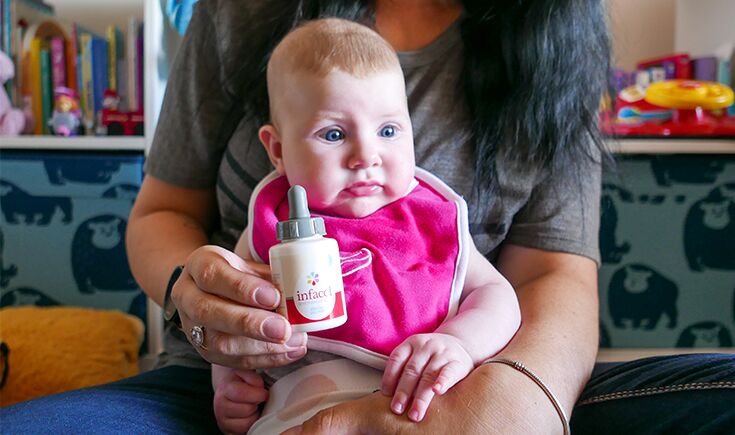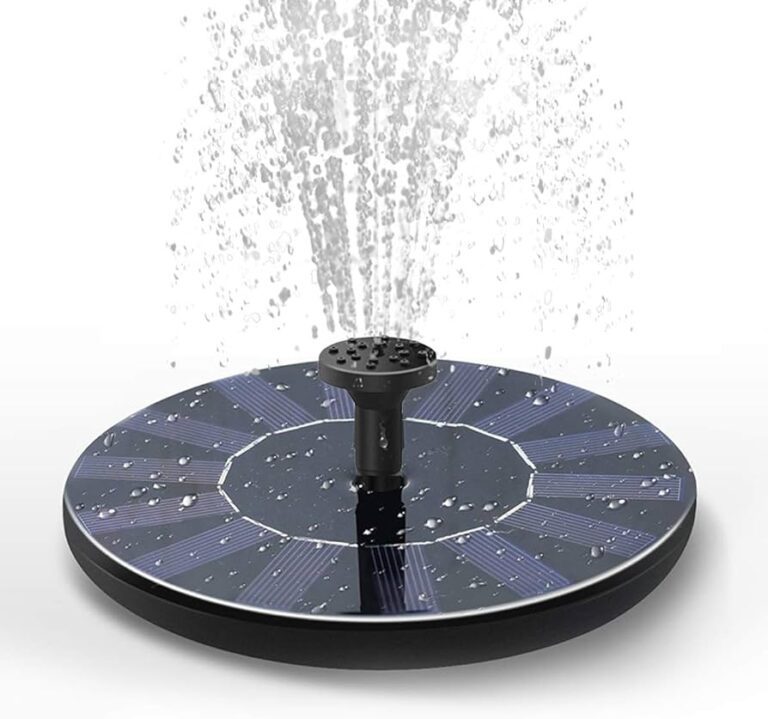How to Safely Put a Blanket on a Newborn: Expert Tips
To put a blanket on a newborn, make sure their feet are at the foot of the crib and tuck a thin blanket around the crib mattress up to their chest, ensuring their head remains uncovered during sleep.
Subheading: Why Is It Important To Safely Put A Blanket On A Newborn?
Safely putting a blanket on a newborn is important to reduce the risk of sudden infant death syndrome (SIDS). By tucking the blanket under the mattress and the baby’s arms, and placing the baby’s feet at the bottom of the bed, you can minimize the risks of the baby wriggling underneath the covers.
Discuss The Risks Involved In Improperly Putting A Blanket On A Newborn
Improperly putting a blanket on a newborn can pose several risks to their safety. It is crucial to understand these risks to ensure the well-being of your little one. Let’s take a closer look at some of the potential dangers associated with unsafe blanket usage. One of the main risks is suffocation. When a blanket is not securely and correctly placed on a newborn, it can inadvertently cover their face, obstructing their airway. This can lead to suffocation, a life-threatening situation that must be avoided at all costs. Another significant risk is an increased susceptibility to sudden infant death syndrome (SIDS). When a newborn is improperly covered with a blanket, they may become overheated. Overheating has been linked to an increased risk of SIDS, making it essential to take every precaution when putting a blanket on a newborn.Highlight The Importance Of Preventing Suffocation And Sids
Preventing suffocation and SIDS is of paramount importance when it comes to putting a blanket on a newborn. As parents, caregivers, and guardians, it is our responsibility to ensure the safety of our little ones. Taking proactive measures to prevent suffocation and reduce the risk of SIDS should be a top priority. Suffocation occurs when the face of a newborn becomes covered by a blanket, impeding their ability to breathe freely. This can result in oxygen deprivation and ultimately, suffocation. To protect against this, it is essential to securely place the blanket on the newborn, ensuring that it does not cover their face or obstruct their airways. SIDS, also known as “cot death,” is an unexplained infant death that typically occurs during sleep. Research has shown that improper usage of blankets and insufficient air circulation can contribute to the risk of SIDS. By following safe practices when putting a blanket on a newborn, we can significantly reduce the chances of SIDS and provide a safer sleep environment for our little ones.Provide Statistics And Facts About The Dangers Of Unsafe Blanket Usage
According to a study conducted by the American Academy of Pediatrics (AAP), unsafe sleeping practices, including improper blanket usage, were identified as contributing factors in approximately 80% of SIDS cases. This alarming statistic highlights the urgent need for safe sleeping practices, particularly when it comes to putting a blanket on a newborn. Furthermore, research has shown that newborns who are swaddled or wrapped too tightly in blankets have an increased risk of overheating, leading to SIDS. The AAP recommends monitoring swaddled babies when they sleep, ensuring that they do not become overheated or have their airways obstructed. To mitigate these risks, it is crucial to follow safe sleep guidelines recommended by healthcare professionals. These guidelines include placing a newborn on their back to sleep, avoiding loose bedding and blankets, and using sleep sacks or wearable blankets as a safer alternative. By understanding and adhering to the dangers associated with unsafe blanket usage, we can prioritize the safety of our newborns and create a secure sleep environment that promotes healthy growth and development.Subheading: What Type Of Blanket Is Safe For A Newborn?
When it comes to putting a blanket on a newborn, safety is the top priority. It’s important to choose the right type of blanket that provides warmth without compromising the baby’s safety. Let’s dive into the different types of blankets that are safe for newborns.
Discuss The Different Types Of Blankets Available
There are various types of blankets available for newborns, each with its own unique features. Here are some popular options:
- Receiving blankets: These are soft and lightweight blankets that are perfect for swaddling newborns. They are usually made of flannel or muslin fabric, providing a cozy, breathable environment for the baby.
- Knit blankets: Knit blankets are made using a knitting technique and are known for their stretchiness. These blankets are soft, warm, and safe for newborns.
- Fleece blankets: Fleece blankets are made of synthetic materials, providing warmth and softness. However, it’s important to choose a lightweight and breathable fleece blanket to ensure the baby doesn’t overheat.
- Swaddle blankets: Swaddle blankets are specially designed for wrapping newborns snugly, mimicking the feeling of being in the womb. These blankets offer a comforting and secure environment for the baby.
Highlight The Recommended Materials For Newborn Blankets
The material of the blanket is crucial when it comes to ensuring the safety and comfort of a newborn. Here are some recommended materials for newborn blankets:
| Material | Benefits |
|---|---|
| Cotton | Soft, breathable, and hypoallergenic |
| Muslin | Lightweight, breathable, and ideal for swaddling |
| Knit | Stretchy, warm, and comfortable |
| Bamboo | Thermoregulating, antimicrobial, and hypoallergenic |
Provide Tips On Selecting The Right Size And Thickness Of Blanket For A Newborn
When selecting a blanket for your newborn, it’s important to consider the size and thickness. Here are some tips:
- Choose a blanket that is neither too big nor too small. A standard size receiving blanket (30×30 inches) is appropriate for newborns.
- Opt for a lightweight blanket to prevent overheating and ensure breathability.
- Avoid blankets with loose weaves or excessive tassels or embellishments that may pose a choking hazard.
- Consider the climate and season when choosing the thickness of the blanket. Thicker blankets are suitable for colder weather, while lighter blankets are ideal for warmer months.
- Always supervise your newborn while using a blanket to avoid any potential risks.
By following these guidelines, you can ensure that the blanket you choose for your newborn is safe, comfortable, and conducive to a good night’s sleep. Remember, prioritizing safety is essential when it comes to your baby’s well-being.
Subheading: Ensuring The Blanket Is Safe And Secure
Ensure the safety and security of your newborn by following these guidelines on how to put a blanket on them. By tucking the blanket securely under the mattress and under their arms, you can minimize the risk of them wriggling underneath the covers.
Discuss The Importance Of Properly Securing The Blanket
Ensuring that the blanket is safe and secure for your newborn is of utmost importance. Properly securing the blanket not only keeps your little one cozy and comfortable but also reduces the risk of accidents or suffocation. It is crucial to follow recommended techniques to ensure the blanket stays in place and does not cover the baby’s face or restrict their movement.
Highlight The Recommended Techniques For Safely Wrapping A Newborn
There are a few techniques that are widely recommended for safely wrapping a newborn. These techniques provide a snug and secure environment while allowing the baby to move freely without any discomfort. The recommended techniques include the traditional swaddle, the sleep sack, and the blanket burrito method. Each method has its own advantages, so it’s essential to choose the one that works best for you and your baby.
Provide Step-by-step Instructions For Safely Putting A Blanket On A Newborn
- Start by laying the blanket flat on a safe surface, such as a flat bed or changing table.
- Place your baby in the center of the blanket, ensuring their neck and head are properly supported.
- Bring one corner of the blanket diagonally across the baby’s chest and tuck it under their back.
- Take the opposite corner and bring it across the baby’s body, tucking it securely under their back as well.
- Next, fold the bottom corner of the blanket up and tuck it under the baby’s shoulder, creating a secure and snug wrap.
- Finally, fold the remaining corner of the blanket over the baby’s body and tuck it under their back, completing the swaddle.
- Ensure the blanket is snug but not too tight. The baby’s hips should be able to move freely and their legs should be in a natural position.
Remember to regularly check on your baby while they are swaddled and ensure that the blanket remains secure. If your baby shows signs of discomfort or struggles to free themselves from the swaddle, it may be time to try a different wrapping method or consider using a sleep sack instead.
Subheading: Creating A Safe Sleeping Environment
When it comes to putting a blanket on a newborn, creating a safe sleeping environment is of utmost importance. Newborns are delicate and require special care to ensure their safety while they sleep. By following the recommended practices for positioning a newborn in a crib or bassinet and maintaining a comfortable and safe environment, you can provide your little one with a peaceful and secure sleep.
Discuss The Importance Of Creating A Safe Sleeping Environment For A Newborn
Creating a safe sleeping environment is crucial for newborns as it helps minimize the risk of accidents and Sudden Infant Death Syndrome (SIDS). Here are a few key points to keep in mind:
- Use a firm mattress: It’s important to provide a firm mattress in the crib or bassinet to reduce the risk of suffocation. Avoid using soft mattresses or pillows that can pose a suffocation hazard.
- Keep the crib or bassinet free of toys and loose bedding: Remove any toys, pillows, or blankets from the sleeping area to prevent the risk of suffocation or entanglement.
- Ensure proper ventilation: Make sure the room is well-ventilated to maintain a comfortable temperature for your baby. Avoid overheating, as it can increase the risk of SIDS.
- Place the crib or bassinet in a safe location: Position the crib or bassinet away from windows, curtains, and cords to prevent any potential hazards.
Highlight The Recommended Practices For Positioning A Newborn In A Crib Or Bassinet
When it comes to positioning a newborn in a crib or bassinet, following these recommended practices can help ensure their safety:
- Back to sleep: Always place your baby on their back to sleep, as it reduces the risk of SIDS.
- Correct swaddling technique: If you choose to swaddle your baby, make sure to do it correctly, covering their body snugly but leaving enough room for them to move their hips and legs.
- Keep the face clear: Make sure your baby’s face remains uncovered during sleep to prevent suffocation. Avoid using blankets or other items that can accidentally cover their face.
- Avoid side sleeping: Never place your baby on their side to sleep, as it increases the risk of accidental rolling and suffocation.
Provide Tips On Maintaining A Comfortable And Safe Environment For The Baby
To maintain a comfortable and safe environment for your baby while they sleep, consider the following tips:
- Choose appropriate bedding: Use a lightweight blanket or sleep sack designed specifically for newborns to ensure your baby stays warm without overheating.
- Monitor the temperature: Keep the room temperature between 68-72°F (20-22°C) to create a comfortable sleeping environment.
- Ensure a smoke-free environment: Keep your baby’s sleeping area smoke-free, as exposure to secondhand smoke increases the risk of SIDS.
- Regularly check the crib or bassinet: Inspect the crib or bassinet for any loose screws, broken parts, or potential hazards that might compromise the safety of your baby.
By adhering to these recommended practices and maintaining a comfortable and safe environment, you can ensure your newborn sleeps soundly while minimizing any potential risks.
Subheading: Monitoring The Baby
To safely put a blanket on a newborn, ensure their feet are at the foot of the crib and tuck a thin blanket around the mattress, stopping at the baby’s chest. It’s important to keep their head uncovered during sleep and avoid soft surfaces like sofas or waterbeds.
Discuss The Importance Of Monitoring The Baby While They Are Wrapped In A Blanket
When it comes to putting a blanket on a newborn, it is crucial to prioritize the safety and well-being of the baby at all times. Monitoring the baby while they are wrapped in a blanket is of utmost importance to ensure their comfort and safety.Highlight The Signs Of Discomfort Or Distress To Look Out For
It is essential to be aware of the signs of discomfort or distress that a baby may display when wrapped in a blanket. Watch for the following indicators: 1. Overheating: Excessive sweating, flushed cheeks, rapid breathing, or the baby feeling hot to the touch can be signs of overheating. Adjust the layers or the type of blanket being used accordingly. 2. Sudden changes in behavior: If the baby becomes fussy, restless, or displays excessive crying, it may indicate discomfort. Check if the blanket is too tight, too loose, or if any part of it is bunching up and causing discomfort. 3. Difficulty breathing: If the baby seems to be having difficulty breathing or if you notice any irregularities in their breathing pattern, it is essential to check if the blanket is obstructing their airways. Ensure that the baby’s face is not covered and there is enough room for them to breathe comfortably. 4. Allergic reactions: Some babies may be sensitive or allergic to certain materials or fabrics. If you notice redness, rashes, or any other signs of irritation on the baby’s skin after using a particular blanket, it is best to switch to a different one.Provide Tips On How To Ensure The Baby’s Comfort And Safety While Using A Blanket
To ensure the baby’s comfort and safety while using a blanket, follow these tips: 1. Choose the right blanket: Opt for a lightweight and breathable blanket made of natural fibers like cotton or muslin. Avoid blankets with loose threads or excessive embellishments that can pose a choking hazard. 2. Proper positioning: Place the baby on their back to sleep and ensure that the blanket is tucked securely under the mattress. This will prevent the blanket from riding up and covering the baby’s face. 3. Size and snugness: Use a blanket that is the right size for the baby. It should be large enough to cover them comfortably but not too big that it poses a suffocation risk. Ensure that the blanket is snugly wrapped around the baby, but not too tight. 4. Temperature control: Be mindful of the room temperature and adjust the number of layers or thickness of the blanket accordingly. It’s essential to maintain a comfortable and safe sleeping environment for the baby. 5. Regular checks: Periodically monitor the baby while they are wrapped in a blanket, even during naps. Check for any signs of discomfort, overheating, or the blanket becoming loose. By following these guidelines and keeping a close eye on the baby while they are wrapped in a blanket, you can help ensure their comfort and safety. Remember, a well-monitored and properly placed blanket can provide warmth and security for your precious little one.
Credit: www.woolino.com
Subheading: Addressing Common Concerns And Misconceptions
When putting a blanket on a newborn, it’s important to ensure their safety and comfort. Tuck a thin blanket around the crib mattress, up to the baby’s chest, with their feet at the foot of the crib. Make sure their head remains uncovered during sleep to reduce the risk of suffocation.
Discussing Common Concerns And Misconceptions About Putting A Blanket On A Newborn
There are several common concerns and misconceptions surrounding the practice of putting a blanket on a newborn. Many parents worry about the safety and comfort of their little one, especially when it comes to using blankets during sleep. Addressing these concerns is crucial for ensuring the well-being of both the baby and the parent. Let’s tackle some of these concerns head-on.
Expert Advice And Guidance On Addressing Concerns
When it comes to putting a blanket on a newborn, it’s important to prioritize their safety while also keeping them warm and cozy. Here are some expert tips to address common concerns:
- 1. Choose the right blanket: Opt for a lightweight, breathable blanket that is specifically designed for newborns. Look for blankets made of soft, hypoallergenic materials that are gentle on your baby’s delicate skin.
- 2. Swaddle safely: Swaddling can provide a secure and comforting environment for your newborn. However, it’s crucial to ensure that the swaddle is not too tight, allowing enough room for natural movement of the hips and legs.
- 3. Observe and monitor: Always keep a close eye on your baby when they are swaddled or wrapped in a blanket. Regularly check their body temperature to ensure they are not overheating.
- 4. Create a comfortable sleep environment: Ensure that your baby’s sleep space is free from any hazards such as loose bedding or stuffed animals. Use fitted sheets and avoid pillows or bulky blankets that can pose suffocation risks.
Reassurance And Tips For Overcoming Challenges
It is natural for parents to feel anxious about using a blanket on their newborn. However, with the right knowledge and precautions, it can be done safely and effectively. Here are some reassurances and tips to help you overcome any challenges or fears:
- 1. Consult with healthcare professionals: Seek advice from your pediatrician or a trusted healthcare provider to address any concerns or doubts you may have. They can provide personalized guidance based on your baby’s specific needs.
- 2. Follow safe sleep guidelines: Familiarize yourself with the safe sleep guidelines recommended by reputable organizations, such as the American Academy of Pediatrics (AAP) or the National Health Service (NHS). These guidelines outline best practices for creating a safe sleep environment for your baby.
- 3. Trust your instincts: As a parent, you have an innate ability to recognize and respond to your baby’s needs. Trust your instincts and make decisions that prioritize your baby’s safety and well-being.
- 4. Seek support: Connect with other parents or join online communities where you can share experiences, ask questions, and receive support from others who have gone through similar challenges. Remember, you are not alone in this journey.
By addressing these common concerns and misconceptions, we hope to provide you with the expert advice and reassurance you need to confidently put a blanket on your newborn. Remember, with adequate knowledge, precautions, and observance, you can ensure a safe and cozy sleep environment for your little one.
Subheading: Alternative Options For Keeping A Newborn Warm
When putting a blanket on a newborn, it’s important to ensure their safety. Avoid covering their head and make sure the blanket is tucked in securely under the mattress, keeping their arms free. Remember to monitor the baby while they sleep to reduce the risk of SIDS.
Discussing Alternative Options For Keeping A Newborn Warm
Aside from using a blanket, there are several alternative options available for keeping a newborn warm. These options provide flexibility and can be particularly useful in different situations. In this section, we will discuss some of these alternatives, highlighting their pros and cons, and provide tips on safely implementing them.
Swaddling
Swaddling is a traditional method that involves wrapping the baby snugly in a blanket to mimic the feeling of being in the womb. This can provide a sense of security and comfort to newborns. However, it is essential to ensure that the swaddle is not too tight, as it can restrict the baby’s movement and pose a risk of overheating. Additionally, it’s crucial to monitor the baby closely to avoid any potential hazards.
Using Sleep Sacks
Sleep sacks, also known as wearable blankets, are designed to keep the baby warm while reducing the risk of suffocation or entanglement. These sacks provide ample room for the baby to move their legs and arms freely, minimizing any safety concerns. Sleep sacks come in different sizes and thicknesses, making it easier to choose the appropriate one for different weather conditions. However, it’s important to ensure that the sleep sack fits the baby correctly and that their face remains uncovered during sleep.
Layering Clothing
Layering clothing is an effective way to keep a newborn warm without using a blanket. It allows for easy adjustment based on the surrounding temperature. Start with a breathable base layer, such as a onesie, and then add additional layers according to the weather conditions. This method provides flexibility and ensures the baby stays comfortable. However, it’s essential to avoid overdressing the baby, as overheating can be dangerous for newborns. Additionally, make sure to check the baby’s body temperature and adjust the layers accordingly.
Utilizing Heating Pads Or Hot Water Bottles
Heating pads or hot water bottles can be used to warm up the baby’s crib or bassinet before placing them inside. This can provide a cozy and comfortable environment for the baby to sleep. However, it’s crucial to use these devices with caution to avoid burns or overheating. Always ensure that the heating pad or hot water bottle is wrapped in a soft cloth or towel to prevent direct contact with the baby’s skin.
Safely Implementing Alternative Options
When implementing these alternative options to keep a newborn warm, it’s important to prioritize safety. Here are some tips to ensure a safe and comfortable environment:
- Always monitor the baby closely, regardless of the option chosen.
- Keep the baby’s sleeping area clutter-free to minimize the risk of suffocation.
- Choose appropriate clothing and bedding materials that are breathable and comfortable.
- Avoid using loose blankets or pillows that can cover the baby’s face during sleep.
- Regularly check the baby’s body temperature to ensure they are neither too hot nor too cold.
- Consult with a healthcare professional for guidance specific to your baby’s needs.
By understanding the alternative options available and implementing them safely, you can ensure your newborn stays warm and comfortable without relying solely on blankets.
Heading: Conclusion
To safely put a blanket on a newborn, tuck it around the crib mattress, only up to the baby’s chest, with their feet at the foot of the crib. Ensure the baby’s head remains uncovered during sleep and avoid placing them on a waterbed, soft mattress, or other soft surface.
Remember to closely monitor swaddled babies while they sleep to reduce the risk of Sudden Infant Death Syndrome (SIDS).
Summarize The Importance Of Safely Putting A Blanket On A Newborn
Safely putting a blanket on a newborn is crucial for their comfort and safety. It helps regulate their body temperature, keeping them warm and cozy. However, it’s important to follow certain guidelines to reduce the risk of suffocation or Sudden Infant Death Syndrome (SIDS). By ensuring the blanket is securely placed and not obstructing the baby’s airways, new parents can provide a safe and nurturing environment for their little one.
Reiterate the key points discussed in the articleReiterate The Key Points Discussed In The Article
Throughout this article, we have highlighted the following key points when it comes to safely putting a blanket on a newborn:
- Choose a lightweight and breathable blanket to prevent overheating.
- Avoid loose blankets or those with strings, as they can pose a suffocation hazard.
- Place the blanket securely under the mattress and tuck it in on the sides to prevent it from covering the baby’s face.
- Ensure the blanket is not too tight, allowing the baby to move their legs and hips freely.
- Do not use blankets when the baby is sleeping in a crib until they are at least one year old.
Offer A Final Piece Of Advice Or Encouragement To New Parents When It Comes To Safely Using Blankets For Their Newborns
As new parents, it’s natural to feel a bit overwhelmed and concerned about your newborn’s well-being. However, by following these guidelines and taking the necessary precautions, you can safely use blankets to keep your baby warm and comfortable. Remember to always stay vigilant and regularly check on your baby to ensure the blanket remains in a safe position. With a little care and attention, you can provide a nurturing environment that promotes your baby’s comfort and safety.
Frequently Asked Questions Of How To Put A Blanket On A Newborn
How Should You Put A Blanket On A Newborn?
To put a blanket on a newborn, ensure their feet are at the foot of the crib. Tuck a thin blanket around the mattress, up to the baby’s chest. Keep their head uncovered during sleep. Avoid placing them on soft surfaces or using thick blankets.
Use breathable materials like cotton.
Can I Wrap My Newborn In A Blanket At Night?
Yes, you can wrap your newborn in a blanket at night. However, it’s important to ensure the blanket is securely tucked under the mattress and under the baby’s arms. Also, make sure the baby’s feet are at the foot of the bed to minimize the risk of the blanket impeding their movements.
How Do I Get My Newborn To Sleep In A Night Blanket?
To get your newborn to sleep with a blanket at night, follow these steps: 1. Tuck the blanket securely under the mattress and under the baby’s arms. 2. Place the baby’s feet at the bottom of the bed. 3. Ensure the blanket doesn’t cover the baby’s head.
4. Use a thin and breathable blanket made of natural materials like cotton. 5. Monitor the baby closely.
How Do You Swaddle A Newborn With A Blanket?
Swaddling a newborn with a blanket involves tucking a thin blanket around the crib mattress, only as far as the baby’s chest. Make sure the baby’s head remains uncovered during sleep. Use natural materials like cotton for breathability. Avoid placing the baby on soft surfaces.
Conclusion
Putting a blanket on a newborn can be done safely and comfortably by following a few guidelines. Ensuring that the blanket is tucked securely under the mattress and placed under the baby’s arms can help minimize the risk of wriggling underneath the covers.
It’s important to remember not to cover the baby’s head during sleep and to use natural, breathable materials like cotton. By taking these precautions, you can keep your newborn cozy and safe while they sleep.








